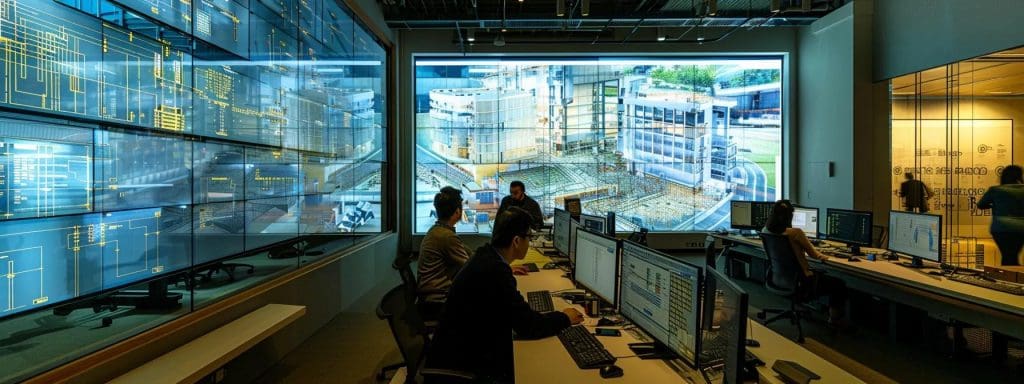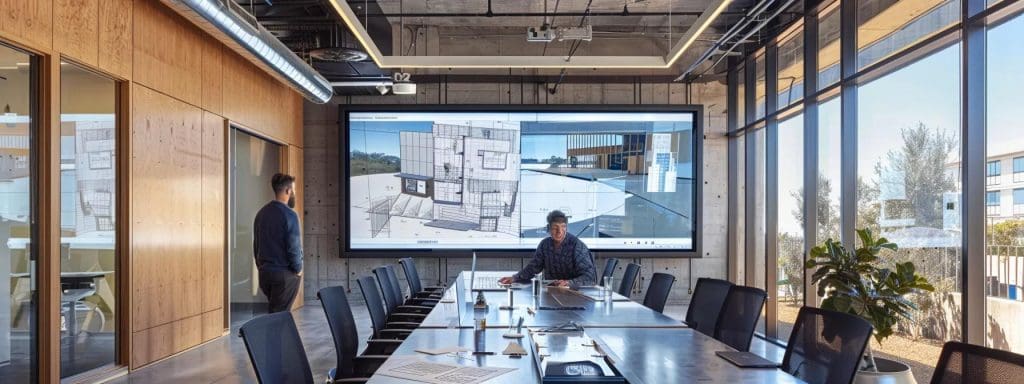Table Of Contents:
- Design and Build vs Traditional: Which Is Better for You?
- Understand the Key Differences Between Design and Build and Traditional Methods
- Evaluate Benefits of Design and Build for Modern Projects
- Review Factors Making Traditional Solutions More Suitable
- Compare Costs of Design and Build vs Traditional Approaches
- Identify Timeframes for Project Completion in Both Methods
- Make an Informed Decision Based on Your Project Needs
- Why Choose Jamatek For Your Design and Build Processes
- Frequently Asked Questions
- Final Thoughts
Design and Build vs Traditional: Which Is Better for You?
Design and build construction represents an innovative approach that integrates design and construction services under one contract, contrasting sharply with the traditional method in which an owner separately contracts an architect and then a builder. Home owners contemplating construction projects face complex decisions when determining which method is best suited to their needs. This article provides a comprehensive analysis of design and build versus traditional construction methods, comparing project management techniques, workflow differences, collaboration levels, flexibility in addressing changes during construction, timelines, and cost implications. By exploring the benefits and drawbacks of both methods, the article serves as a critical guide for home owners aiming to make informed decisions. The analysis is underpinned by expert insights from an architect and planning consultant at Jamatek, a company renowned for its integration of cutting-edge AI and VR technology in the design process. With a focus on precision and modern innovation, this discussion helps clarify how design and build methods can foster efficiency and creativity while also highlighting scenarios where traditional methods may be more appropriate.
Transitioning from the general overview, the article now delves deeper into the key differences between design and build and traditional methods, examining aspects such as project management techniques and cost, before guiding the reader through practical decision-making based on individual project needs.
Understand the Key Differences Between Design and Build and Traditional Methods

The key differences between design and build construction and traditional building methods become evident when considering the integration of project components. In design and build, one entity manages both design and construction, significantly streamlining communication and reducing the risk of misinterpretation between separate contracts. In contrast, the traditional approach involves a separate design and construction team, which can lead to potential delays and disagreements if coordination is not flawlessly maintained. The integrated approach in design and build ensures seamless transitions from initial concepts to final construction, fostering quicker problem resolution and enhancing overall project efficiency. Meanwhile, traditional methods offer a degree of specialized expertise and control over the design phase, empowering clients who wish to closely oversee architectural details.
Examine Design and Build Project Management Techniques
The design and build method employs unified project management strategies where the same team oversees design, permitting, and construction. This centralized management creates greater accountability and provides clients with one point of contact, reducing conflicts and expediting decision-making. Integrated project delivery methods such as Lean Construction are often utilized to minimise waste and maximise efficiency, ensuring that the project’s design, cost, and schedule align closely with the owner’s objectives. For instance, design and build teams frequently use advanced project management software and BIM (Building Information Modelling), both of which facilitate real-time updates and smoother collaboration among all parties involved.
Explore the Traditional Building Approach Workflow
Traditional construction typically separates the design and construction processes, starting with designing and securing approvals by the architect, followed by tendering for contractors and then executing the build. This sequential process can extend timelines but allows for thorough conceptual development and detailed design iterations. Home owners who prefer control over design details might favour this conventional method. However, the segmented approach often poses challenges in maintaining continuity between the design and construction phases, which can lead to increased rework if differences arise between the architect’s vision and the contractor’s implementation.
Identify Collaboration Levels in Both Methods
Collaboration is essential for successful project outcomes. In design and build, collaboration is inherently high due to the overlapping responsibilities of the design and construction teams. This collaborative environment fosters rapid problem-solving and innovation. In contrast, traditional methods typically see lower integration between designers and builders, sometimes resulting in miscommunication that can exacerbate project delays or cost overruns. The enhanced collaboration in design and build is often supported by shared objectives and mutual accountability, ensuring that project revisions are managed efficiently.
Compare Flexibility in Project Changes During Construction
Flexibility is a critical factor, particularly when unexpected issues arise. Design and build teams are well positioned to adapt to changes because design modifications are integrated within the same contract and management structure. This leads to quicker decision-making and fewer disputes over change orders. Traditional methods, however, require negotiation between the architect and the contractor when alterations occur, potentially slowing down the process. Home owners who anticipate frequent changes during construction might benefit from the flexibility offered by the design and build approach.
Assess Timelines for Completion in Each Approach
Time is often of the essence in construction projects. The design and build approach typically results in shorter project durations due to overlapping design and construction phases, streamlined communications, and the elimination of tendering delays. Traditional construction, while allowing for comprehensive design, usually adheres to a longer, sequential schedule that can delay occupancy. The accelerated timeline of design and build can be particularly advantageous for home owners looking to occupy or utilise their new space as soon as possible.
Review the Cost Implications Associated With Both Methods
When comparing cost implications, design and build often lead to more accurate budgeting and cost efficiency due to the integrated approach and reduced risk of miscommunication. Although initial estimates might seem lower in traditional methods, unforeseen expenses often arise due to changes, misalignments between design and construction, or scope alterations. Integrated cost planning in design and build processes utilises contemporary project management tools and detailed cost tracking, leading to fewer surprises and potentially lower overall expenses.
Key Takeaways: – Design and build offers integrated project management for smoother communication. – Traditional methods allow for detailed design oversight but may experience coordination issues. – Flexibility and reduced timelines generally favour design and build. – Integrated cost planning via design and build often leads to fewer unexpected expenses.
Evaluate Benefits of Design and Build for Modern Projects

Design and build is often regarded as a forward-thinking solution that aligns with modern digital trends in architecture and construction. The benefits extend beyond mere cost savings; the method promotes innovation, streamlined communication, risk management, and accelerated project delivery. Modern construction projects increasingly rely on technologies such as BIM and VR simulations to visualise end results before construction begins, making design and build perfectly suited to these applications.
Understand How Design and Build Fosters Innovation
In the design and build approach, innovation stems from close collaboration between architects and contractors. This collaboration is enhanced by technology integration, where modern tools such as VR enable clients to “walk through” their buildings before they are built. The rapid prototyping and iterative feedback loops allow for design improvements and innovative solutions to emerge organically. For example, a recent study by Smith et al. (2021) demonstrated that projects using integrated delivery methods experienced a 25% improvement in design accuracy and a 15% reduction in post-construction changes.
Identify Cost-Effectiveness in the Design and Build Process
Cost-effectiveness is a cornerstone of the design and build method. With one contract covering both design and construction, there is greater transparency in spending and fewer opportunities for budget overruns. The use of BIM ensures that potential issues are identified earlier and resolved before they develop into costly errors. Moreover, economies of scale are achievable when a single entity manages the project, often resulting in competitive pricing and better resource allocation.
Discover Streamlined Communication Advantages
Streamlined communication is one of the most compelling benefits of design and build. A unified team provides a single point of contact, reducing delays and confusion that typically occur in projects involving multiple parties. Advances in project management software have further enhanced communication, providing real-time updates and facilitating immediate responses to any issues. This interconnectedness not only enhances project speed but also elevates the quality of the final product.
Measure Improved Project Delivery Speed
By overlapping design and construction phases, design and build projects are usually completed faster than traditional projects. The integrated approach mitigates delays associated with tendering and sub-contracting, ensuring that construction can commence sooner. For home owners, this means that the time between concept and occupancy is significantly cut, allowing for a faster return on investment and satisfaction from a quicker move-in process.
Assess the Risk Management Approach in Design and Build
Risk management in design and build is inherently more robust because potential issues are addressed collaboratively from the outset. With cost, timeline, and quality closely monitored by a unified team, risks are mitigated through continuous assessment and swift decision-making. The streamlined process minimizes opportunities for disputes and scope creep, safeguarding the project’s overall success.
Evaluate Customer Satisfaction Metrics in Design and Build
Customer satisfaction is typically higher in design and build due to the transparency and efficiency provided by the integrated process. Home owners benefit from a seamless experience, where design intent is preserved while simultaneously ensuring construction quality. Post-project surveys often highlight reduced stress levels and higher satisfaction rates among clients who chose design and build.
Key Takeaways: – Design and build fosters innovation through integrated technology and iterative feedback. – It is inherently cost-effective and accelerates project delivery. – Streamlined communication reduces delays and enhances overall quality. – Robust risk management ensures fewer disputes and unexpected issues. – Customer satisfaction is generally higher, leading to a more seamless project experience.
Review Factors Making Traditional Solutions More Suitable

Despite the modern advantages of design and build methods, traditional construction continues to hold significant appeal for certain projects and client preferences. Traditional methods are particularly advantageous for projects where design control and specialised detailing are paramount. In traditional construction, the separation of design and construction phases allows clients to engage directly with a highly specialised architect, thereby ensuring that creative vision and aesthetic priorities are fully honoured. This method can be ideal for high-end residential projects or bespoke commercial developments where individualised architectural features are non-negotiable.
Investigate Project Types Traditionally Aligned With This Method
Traditional construction is often the preferred choice for projects that require intricate design and customised detailing. Residential homes, heritage restorations, and bespoke commercial properties frequently benefit from the separate expertise of architects and contractors. The allowance for extensive market research and design refinement often results in a highly tailored final product. Traditional projects tend to involve more extensive preliminary planning, which can lead to a higher quality, albeit sometimes longer, design process.
Assess the Expertise Required for Traditional Builders
The traditional method involves contracting separate professionals who specialise in design and construction. This separation often results in a deeper level of expertise and a more refined final product, as clients can select an architect renowned for a specific style or technical proficiency. For example, owning a heritage home may necessitate the skills of an architect experienced in conservation, while other contractors provide the logistical expertise needed for high-quality build execution. The layered expertise often results in a high-caliber finish that meets very specific client requirements.
Evaluate the Design Control Traditional Methods Offer
Traditional construction affords home owners greater control over the architectural design, as it clearly delineates the design phase from construction. This separation allows for thorough vetting of design plans, meticulous revisions, and detailed contractual agreements. Home owners who place premium value on the aesthetic and functional nuances of their projects may favour this method, as it permits more discreet control over every design element. Although the process might be slower, it affords greater precision in achieving the desired design outcome.
Identify Long-Term Reputations of Traditional Companies
Many traditional construction companies have established long-standing reputations for quality, reliability, and craftsmanship. This history of excellence can be a decisive factor for clients who value proven track records. Traditional companies often rely on enduring relationships with clients, resulting in repeat business and strong industry credibility. Home owners seeking tried-and-tested methods may lean towards these established companies, trusting their experience to deliver exceptional, lasting results.
Consider the Importance of Local Culture and Regulations
Local building codes, cultural aesthetics, and regional construction practices can strongly influence the choice of construction method. Traditional construction methods often have the flexibility to incorporate local materials and culturally significant design elements, ensuring that the project seamlessly blends with its surroundings. Additionally, these methods are typically well-versed in local regulatory requirements, reducing the risk of compliance issues and delays.
Review the Value of Standardised Processes in Construction
Standardised processes intrinsic to traditional construction can lead to predictability and reliability in project outcomes. Home owners who appreciate a well-documented, linear workflow may find comfort in the traditional approach, which provides clear benchmarks, quality controls, and often, a comprehensive warranty on work completed. This method emphasizes quality through stringent adherence to established construction standards, thereby ensuring that each project meets the high expectations of clients who value durability and fine craftsmanship.
Key Takeaways: – Traditional methods excel in projects requiring bespoke and specialised designs. – They offer enhanced design control and cater to clients with high aesthetic demands. – Long-standing reputations provide assurance of quality and reliability. – Local cultural influences are seamlessly integrated into traditional designs. – Standardised construction processes ensure consistency and durability.
Compare Costs of Design and Build vs Traditional Approaches

Cost comparison is a pivotal aspect for home owners deciding between design and build and traditional methods. While initial estimates can be appealing on both sides, a deeper examination reveals that design and build processes often lead to more predictable and potentially reduced final costs. In design and build, a singular contract minimizes hidden charges and reduces the risk of budget overruns, as cost control is maintained from the early stages through to project completion. Conversely, traditional methods might display lower initial costs but can incur unexpected expenses due to the segmented contractual nature.
Calculate Initial Investment Differences
The initial investment in design and build tends to be higher in planning due to integrated services, but these costs are often offset by the streamlined processes and minimized coordination issues. Home owners typically face a well-defined budget with fewer variable factors. In traditional projects, while bidding and design phases might appear less expensive, the eventual separation between the architect’s plan and contractor’s execution may result in multiple renegotiations, increasing both time and cost unpredictability.
Break Down Potential Unexpected Expenses
Unexpected expenses in traditional construction can emerge through miscommunications between the design and building teams, requiring costly modifications and delay penalties. Design and build integrates risk mitigation strategies where variances are addressed collectively. This consolidation frequently results in better-aligned financial forecasting, with fewer budget surprises post-contract. For example, changes during the build process in a traditional setup may add an extra 10-15% to the final cost compared to integrated approaches where adjustments are planned in advance.
Gauge Overall Lifecycle Costs Involved
Evaluating lifecycle costs involves not only the construction expenditure but also future maintenance, operational costs, and energy efficiency. Design and build projects, with their emphasis on modern technology integration and sustainable practices, often yield buildings that are more energy efficient and easier to maintain. The initial higher cost might be balanced by lower operational costs over time. On the other hand, traditional methods could potentially demand more maintenance and updates, driven by less integrated design solutions.
Measure Financing Options Available for Both
Financing options for design and build projects have evolved with the increasing popularity of the method. Lenders often view integrated projects as less risky due to their streamlined nature and consolidated cost management, making them eligible for competitive financing terms. Traditional projects, due to possible variability during construction, may encounter stricter financing conditions. Home owners must assess these options carefully, considering that an integrated approach might secure lower interest rates and more flexible payment schedules.
Analyse Budget Management Strategies
Integrated budgeting in design and build involves collaborative cost planning from conception to completion, utilising advanced tracking software and regular updates. This level of coordination often translates to a controlled fiscal environment where the risk of overruns is minimized. In contrast, the traditional method requires separate budget controls for design and construction, which may lead to inconsistencies and greater financial risk if one phase experiences delays or unexpected expenditures. Mortgage providers and investors typically favour the certainty provided by design and build contracts, as it enables a more reliable projection of final project costs.
Key Takeaways: – Design and build offers more predictable costing with integrated risk management. – Unexpected expenses tend to be lower due to streamlined communication. – Lifecycle costs often favour design and build through enhanced energy efficiency and reduced maintenance. – Financing options are typically more flexible with integrated projects. – Consistent budget management in design and build reduces financial risks and overruns.
Identify Timeframes for Project Completion in Both Methods

Timeframes represent another decisive criterion when comparing design and build and traditional construction methods. Home owners often need to balance the desire for a meticulously designed dwelling with the need to occupy the space as soon as possible. Design and build projects tend to follow shorter, more predictable deadlines because design and construction phases run concurrently. In contrast, traditional projects generally adhere to a sequential process, where each phase waits for the previous phase’s approval before progressing, thereby inherently extending the timeline.
Explore Typical Timelines for Design and Build Projects
Design and build methods benefit from overlapping processes, which can reduce project duration by as much as 20-30% compared to traditional approaches. With a single point of coordination, projects can start construction immediately after preliminary designs are approved. Advanced tools such as BIM and VR facilitate efficient pre-construction planning, allowing potential issues to be resolved early in the process. Real-world examples indicate that integrated projects can see completion in as little as 9-12 months, depending on project scope and size.
Identify Key Factors Affecting Traditional Project Timelines
In traditional construction, the sequential phases—conceptual design, detailed design, tendering, construction, and handover—can lead to significant delays. Coordination gaps between design and construction teams frequently result in waiting periods as each phase is finalised independently. Moreover, the likelihood of change orders and disputes increases the project timeline further. Projects using the traditional method can sometimes extend by several months beyond initial estimates due to the need for iterative revisions or re-negotiation between multiple parties.
Review the Impact of Project Size on Completion Time
The size and complexity of a project play a vital role in determining the completion times for both methods. Smaller projects may see relatively quick turnarounds regardless of the method; however, larger projects tend to benefit significantly from the concurrent processes employed in design and build. In extensive residential or commercial developments, synchronised design and construction not only reduce the overall schedule but also lower the cumulative risk of delays. For instance, multi-story residential projects might see time savings of up to 4-6 months with a design and build approach compared to traditional methods.
Compare Acceleration Options Available for Both Methods
While design and build typically offers natural acceleration, traditional methods can sometimes incorporate acceleration strategies such as fast tracking or phased deliveries. However, these options often come at a premium, with increased risk of quality compromise or additional costs. Home owners must weigh the benefits of reduced timelines against potential extra expenditures. Integrated project management in design and build provides inherent acceleration without the frequent pitfalls associated with rushing traditional projects, making it a more attractive option for time-sensitive developments.
Assess the Influence of Client Involvement on Schedules
The degree of client involvement also significantly affects project timelines. In a design and build scenario, high levels of client engagement are facilitated through regular updates and VR walkthroughs, which can lead to faster approvals and fewer revisions. Conversely, in traditional projects, delays may arise from extended periods waiting for client feedback or changes between sequential phases. Efficient client communication and decision-making are more easily managed when a single entity is responsible for the complete project, further solidifying the time advantages of design and build.
Key Takeaways: – Design and build projects benefit from overlapping processes, reducing timeframes. – Traditional projects may suffer delays due to sequential phase handovers. – Larger projects see particularly notable time savings with integrated methods. – Acceleration options in traditional construction often incur additional costs. – Improved client communication in design and build supports quicker approvals.
Make an Informed Decision Based on Your Project Needs

Deciding between design and build versus traditional methods necessitates a careful evaluation of the project scope, budget, team expertise, and long-term operational needs. Home owners must assess the specific requirements of their project to determine the most suitable method for achieving their desired outcomes. Projects requiring rapid delivery, integrated technology, and a single point of accountability tend to benefit from the design and build approach, while those prioritising bespoke design control and a detailed, tailored finish might favour traditional methods.
Determine Project Scope to Assess Suitable Methods
The scope of a project is a critical determinant in choosing the construction method. For large-scale, complex projects or ones with tight deadlines, design and build offers the advantage of integrated management that can address various components simultaneously. Home owners should evaluate whether the project demands a singular oversight approach or if separate expert interventions are necessary. Comprehensive project scoping, including feasibility studies and design iterations, helps in forming a clear picture of what approach will deliver the best balance of quality, speed, and cost-efficiency.
Evaluate Your Budget Constraints Before Choosing
Budget constraints are a fundamental factor in decision-making. While design and build projects often present a higher initial expenditure, the streamlined process typically results in fewer unexpected costs over the project lifecycle. In contrast, traditional methods may offer lower starting bids but carry a higher risk of cost escalations due to design conflicts or change orders during construction. Home owners must carefully assess their financial flexibility and consider the potential for long-term savings in energy and maintenance when choosing the ideal approach.
Analyse Your Team’s Experience for Method Suitability
The expertise and familiarity of the project team with either method can dramatically influence project outcomes. Home owners with experience working with integrated design and build teams may find the process smoother and more predictable, whereas those accustomed to traditional models might prefer the established protocols of separate professional roles. Evaluating previous project successes, client testimonials, and industry credentials can provide valuable insights into the performance and reliability of the chosen method.
Consider Long-Term Maintenance and Operational Needs
Long-term operational requirements remain a crucial consideration. Buildings constructed using design and build methods often incorporate modern energy-efficient technologies and sustainable practices, which can reduce operational costs over time. Traditional constructions, while offering superior aesthetic customisation, may require additional investments for retrofitting and energy upgrades to meet current efficiency standards. Home owners should account for the total cost of ownership, including maintenance, utility bills, and potential future renovations when finalising their decision.
Seek Professional Advice Tailored to Your Project’s Complexity
Engaging with experienced professionals, such as the team at Jamatek, can ultimately provide the expert insights needed for a well-informed decision. Professional advice not only helps clarify technical aspects but also aligns the selected construction method with the client’s specific goals and vision. By considering both current project requirements and future operational implications, home owners can achieve an informed, balanced decision that optimises both functionality and aesthetics.
Key Takeaways: – Project scope and budget are decisive in choosing the right construction method. – Assessment of team expertise and previous experiences is critical. – Long-term operational costs can favour design and build with modern technology. – Professional advice is indispensable for navigating complex project needs. – Informed decisions require a balance between upfront costs and future benefits.
Why Choose Jamatek For Your Design and Build Processes

Jamatek stands out as a leader in the design and build sector, leveraging cutting-edge AI and immersive VR technology to craft spaces that are both visually stunning and highly practical. With a profound commitment to precision, efficiency, and creativity, Jamatek ensures that each project is executed seamlessly from concept to completion. Their integrated approach unites architecture and construction under one management umbrella, reducing miscommunication risks and enabling faster project delivery without compromising on quality. Home owners benefit from a streamlined experience, with real-time design explorations that allow for immediate adjustments, ensuring that the final outcome perfectly aligns with their vision and goals.
The company’s use of VR technology transforms the traditional design process into an interactive experience where clients can virtually explore their projects. This integration of AI-driven insights ensures that design decisions are data-backed and optimised for efficiency. Additionally, Jamatek’s commitment to sustainable practices guarantees that every project not only meets but exceeds modern energy and environmental standards, promising long-term value and reduced operational costs. Their expert team, with years of industry experience, offers bespoke solutions tailored to the unique needs of each client, whether residential, commercial, or public sector.
Choosing Jamatek means entrusting your project to professionals who innovate continually, meticulously ensuring every detail is executed to perfection. Their track record of successful, on-budget, and timely project completions underscores their reputation as a trusted partner in the construction landscape.
Key Takeaways: – Jamatek integrates advanced AI and VR for interactive, precise designs. – Their design and build approach ensures faster, coordinated project execution. – Sustainable practices and energy efficiency are core to their process. – Expertise and bespoke solutions provide long-term value for home owners. – Jamatek’s innovative methods minimise revisions and optimise budgets.
Frequently Asked Questions
Q: What is the primary difference between design and build and traditional methods?
A: The primary difference is that design and build integrates design and construction under one contract, leading to better coordination and reduced timelines, whereas traditional methods involve separate contracts for design and construction that can lead to potential miscommunications and longer project schedules.
Q: How does design and build impact project timelines compared to traditional approaches?
A: Design and build projects benefit from overlapping design and construction phases, often reducing overall project durations by 20-30%. This integration allows for quicker decision-making and fewer delays, making these projects ideal for clients with strict deadlines.
Q: Are cost overruns more common in traditional construction?
A: Yes, traditional construction tends to have more frequent cost overruns due to the segmented process between design and build stages. Unplanned changes and miscommunications between separate contracts can lead to additional expenses, whereas design and build methods offer more predictable budgeting through integrated cost management.
Q: Which method offers better flexibility for handling changes during construction?
A: Design and build methods typically offer superior flexibility because both design modifications and construction changes are managed by a single team. This integration facilitates rapid adjustments compared to traditional methods, where any alteration requires renegotiation between the design and construction teams.
Q: How can home owners decide which method is best for their project?
A: Home owners should evaluate several factors including project scope, budget, the need for design control, timeline requirements, and long-term maintenance considerations. Consulting with experienced professionals, like those at Jamatek, can also provide tailored advice to ensure that the chosen method aligns with both immediate needs and future goals.
Final Thoughts
In conclusion, both design and build and traditional construction methods carry their own merits and drawbacks. Home owners must weigh factors such as project timelines, cost management, design control, and collaborative efficiency when making their decisions. While design and build methods offer remarkable benefits in terms of speed, integration, and innovation, traditional methods provide unmatched detail and specialised expertise. Ultimately, informed decision-making, guided by professional insights from industry leaders like Jamatek, will ensure that each project meets its unique demands and achieves lasting value.
